#Bill Couturie
Explore tagged Tumblr posts
Text
Denizens of the fantroll community, please put your hands together for CARNEVALE CONFECTIONS: A BLOODSTAINED MASQUERADE, the winning tied theme of the 12th Perigee Ball of 2023!
This theme combines both Sogno Dell’Arlecchino and Blood & Candy into one! However, you are not obligated to use both themes in outfits for your trolls, or neither of them at all; feel free to mix and match at will, or do something else entirely!
Only trolls wishing to enter for Grand Couturier must match the theme - or one of them, at least - as best they can. This restriction does not apply to ball royalty.
Circuses on Alternia are well-acquainted with blood of all hues spattered against their tent walls; now nihilistic revelry and sweet carnevale fare is entwined with the gleaming, elegant mystique of rainbowdrinkers, those fearsome creatures of the day.
Kilran Barbas meant only to enact his vision of bloody decadence, but a visit from a matesprit’s distant fuchsia relation (and his blank check) has compelled him to combine his plans with the old clown’s desire for a beautiful carnevale event. He does want his mansion’s picturesque cliff and lake fixed, and he doesn’t feel like footing the bill from last sweep’s explosion all by himself.
So a deal has been struck, caegars have changed hands, and now the undead and the mirthful go hand in hand, all indulging in their own delights beneath the chandeliers of the Alternian Yule Ball.
Here is a pinterest board to assist with aesthetic options you may find helpful for this theme!
>:0) HONK!!!!!!
#12th perigee ball 2023#homestuck#hiveswap#homestuck 2#hs2#friendsim#fantroll#fantroll community#fantroll community event#fantrolls
114 notes
·
View notes
Text

"I informed our group this morning that Sean Couturier is the captain of this team. His leadership and presence has been second to none this year and an essential reason why our group is playing at another level. He is a true professional on and off the ice."
[Couturier] ranks fifth in team history in games played and is the fifth player in Flyers history to skate in 12-or-more seasons with the club: Claude Giroux (15), Bobby Clarke (15), Rick MacLeish (12) and Bill Barber (12).
"Now the other way, Giroux. He's got plenty of help – Giroux – hold – to Couturier – HE SCORES! He's nineteen years old and he has a Stanley Cup hat trick! The Flyers lead 7-5!... So many times, I've said, alright, I've seen it all. This Flyers team continues to do things that just. Well, it defies everything you think you know about the game."
X / X / X / X
38 notes
·
View notes
Text

«Lesbienne, grosse et juive»: la gazette OTAN-LGBT «Le Monde» prend la défense de Barbara Butch, la «Jésus-e» de la Cène des J.0.
«Ceux qui s’en prennent à Barbara Butch le font car ils ne supportent pas qu’elle puisse représenter la France», reprend (https://www.lemonde.fr/societe/article/2024/07/30/ceremonie-d-ouverture-des-jo-2024-la-dj-barbara-butch-porte-plainte-apres-des-menaces-de-mort_6261948_3224.html)Le Monde.
D’où parle le journal officiel du régime?
Subventionné par Bill Gates, le quotidien a, entre autres, pour actionnaire (https://www.lalettre.fr/fr/medias_presse-ecrite/2023/07/21/rachat-des-actions-du-monde--madison-cox-se-pourvoit-en-cassation-contre-xavier-niel-et-matthieu-pigasse,110005901-art) Madison Cox, héritier de Pierre Bergé, partisan (https://www.marieclaire.fr/,pierre-berge-pma-gpa-louer-son-ventre,20123,680919.asp) de la «location de ventres» pour la GPA.
Madison Cox a été jardinier et intendant de la villa Majorelle d’Yves Saint-Laurent et de son compagnon Pierre Bergé, «une villégiature sexuelle» au Maroc pour des relations «avec leurs jeunes amants».
Fabrice Thomas, garçon de joie de Bergé et du couturier, relate dans un livre (https://www.valeursactuelles.com/societe/pedophilie-au-maroc-les-revelations-choc-dun-ex-amant-de-berge-et-saint-laurent):
Cox «était agenouillé devant un adolescent prépubère debout devant lui, nu comme un ver. Tenant ses fesses à pleines paumes, il suçait avidement l’enfant qui se laissait faire en regardant en l’air, tenant à la main un billet».
Madison Cox figure aussi, sans surprise, sur le «petit carnet noir» de Jeffrey Epstein.
A la page 67 (https://epsteinsblackbook.com/pages/67).
4 notes
·
View notes
Photo

The fashion designer Mary Quant had perfected key aspects of 1960s British pop culture long before midnight chimed on the last day of 1959. The Chelsea girl and her try-anything attitude, her short, narrow garments casually bought from a Kings Road boutique – Quant had been working on these since the mid-50s. It took the zeitgeist until at least 1963 to catch on, let alone catch up.
Quant, who has died aged 93, opened her first Kings Road shop, Bazaar, in 1955, the year after Gabrielle “Coco” Chanel ended her postwar hiatus and reopened her Paris salon. They shared a similar ambition: to clothe young, independent women unsuited to fashion dominated by Christian Dior’s 1947 New Look and the work of the grand couturiers. Quant and Chanel designed their clothes to allow new physical and mental freedoms; Quant (unlike Chanel) was also in favour of fun, in reaction to her own teen years under postwar austerity.
Life then had been rationed, begrudged; almost the only place where the young could create their own excitement was at art college, with the Chelsea Arts Ball an annual chance for frivolity. At that ball a teenaged Quant, clad chiefly in balloons, hooked up with a fellow Goldsmiths’ College student, Alexander Plunket Greene, who swanned around long-haired in his mother’s silk pyjama top, trumpet in one hand and film script in the other.
“Life … began for me when I first saw Plunket,” she wrote in her 1966 autobiography Quant By Quant. He was short on ready cash, with an income of “four bob a day,” he recalled, “if one bought cigarettes one couldn’t go the cinema too”, but posh and sexually sophisticated. “Alexander had no use for straightforward sex at all,” Quant said, and he also was consistently unfaithful.
He came from a family said to be Evelyn Waugh’s model for the Flytes in Brideshead Revisited and was at art college crossing social classes. She, born in Blackheath, south-east London, had been persuaded by her parents, Jack and Mildred, both schoolteachers, to study art rather than fashion on leaving Blackheath high school.
After Goldsmiths’, she worked as a trainee assistant at the Mayfair milliner Erik. Quant picked up pins with a magnet and counted out the ration of one chocolate biscuit a day for the assistants, who were so poorly paid that, as Cecil Beaton exaggerated, “there were weeks when only an aspirin touched Mary’s lips and, but for the Jamaicans in nearby Claridge’s kitchens handing over their refuse bins, she would have starved”.
The creation of a hat was Quant’s practical introduction to fashion, and the sculptural moulding that quickly shapes millinery influenced her approach to clothes. She had reservations about “spending three days making one hat which would be worn for one afternoon by a grumpy, spoiled middle-class woman”, learned dress-pattern-cutting at night school, to put outfits together for herself, and briefly worked for the Butterick pattern company.
Plunket’s poverty ended on his 21st birthday when he inherited £5,000; advised by the entrepreneur Archie McNair, who became Quant’s financial brain thereafter, he took a mortgage on a property on the corner of Markham Street and Kings Road, Chelsea.
He wanted to open a nightclub in its basement, but could not get an alcohol licence, so that level became Alexander’s Restaurant, a bistro influenced by his friend Terence Conran and the recipes of Elizabeth David. Plunket told McNair that his girl was good at clothes, and Quant set up Bazaar on the ground floor.
Bazaar acted in lieu of the desired club, with wine or scotch under the counter and girls shedding their garments on the floor, attracting anti-establishment former art-school characters who had gone into photography and journalism. It was hardly a shop – the preferred word was boutique anyway – since the couple never understood business. Incoming bills were piled up and those at the top were paid – Conran said you could not open the front door for writs. They were part of the new bohemian Chelsea set and their stories became SW3 legend.
Quant bought fabric from Harrods at retail prices on a Plunket family account, and had to sell each batch of clothes before she could buy more; when she ran out of stock, she simply shut up shop and started sewing. When she asked manufacturers to make for her, few would, since her ever-skimpier, shorter shapes did not promise big enough profit margins.
Besides, Bazaar might be closed for weeks with a “gone fishing” sign placed in the window while Quant and Plunket went on holiday. They wanted a wider life, flying off in chartered planes to gamble in Le Touquet: because of the era’s currency restrictions, Quant smuggled out in her knickers the cash to buy a French home. They ran an illegal chemin-de-fer game in the Quant delivery van parked in a different Chelsea street each Thursday.
By the late 50s Quant had synthesised her Chelsea girl look from elements of left bank kooky beatnik and practical details of American sportswear, plus her preference for vulgarity over good taste. Then she began supplementing it with memories of her ideal – a girl of about eight glimpsed during a childhood dancing class, who had a Dutch doll haircut and wore a dark skinny knit, very short pleated skirt, white socks and black patent shoes that focused on the boot button of their ankle strap. Quant made similar clothes the basis of the dolly-bird look of the 60s.
In retrospect, this sexualised projection of a very young girl feels disturbing. Dolly-birds skipped, and knocked their knees, and pointed their toes in what Quant called “the wet-knicker pose”. Stocking-tops and suspenders were slowly replaced by patterned or coloured tights, and Quant developed stretchy undergarments no heavier than those tights.
Quant’s own hairdresser, Vidal Sassoon, cut geometric variants of the bob. The whole ensemble pointed in one direction. “The crotch is the most natural erogenous zone,” said Quant, directing her models in their Banlon, Bri-nylon and PVC mini shifts to prance for maximum pelvic thrust, and claiming that her husband once cut her own green-dyed pubic hair into a heart shape. Angry bowler-hatted men beat with fists and umbrellas on Bazaar’s window, Quant recalled: “It got to them in some way, what I was doing.”
Being a dolly-bird was just about affordable on teen pay. Quant went wholesale in 1961, and two years later launched mass-market fashions under the name Ginger Group – ginger, prune and grape being the previously non-fashion colours that she favoured. She also signed on as an adviser with the US retailer JC Penney: from then on she could afford to hop on big jet planes to distant destinations at whim, as she had once done buses on Kings Road; her personal transport was a black Mini car with a black leather interior.
But she was never comfortable with large-scale clothes production and soon realised that the real money lay in franchising household goods such as bedding, and, even more, in designing faces.
Mary Quant cosmetics arrived in 1966 and were more original than her clothes. Cosmetic containers had traditionally been designed as ornaments for dressing tables, with lipsticks and compacts based on 18th-century boudoir trinkets. Quant observed that professional models painted their faces like canvases with brushes and theatrical grease sticks, and as an art student she had worn the contents of her watercolour paint tubes. She commercialised these ideas, and the daisy logo that was always the doodled focal point of her dress sketches then appeared on makeup packaging – yellow tins of crayons, and simplified bottles, sold not from store counters but from “pods” that might have been moon landing capsules.
Skin cream was sold with matching vitamin pills. Bazaar closed in 1969, by which time 7 million women worldwide had Quant’s label in their wardrobe.
Quant cosmetics also dwindled away in the 70s but were revived under licence in Japan in 1984, and re-exported to the west in the 90s. Japan was Quant’s most logical market, for young women there have cultural sanction to present themselves as prepubescent – pretending to be very young is seen as liberating, which appealed to Quant, who said: “I grew up not wanting to grow up, growing up seemed so terrible, children were free and sane.”
She eventually resigned as director of the company, and lost control in 2000 of her name and her daisy, but stayed as consultant. She also began designing clothes for the New York store Henri Bendel, which realised her vintage work was being collected. Her approach was understood as being as dramatically simple as Chanel’s – “Only I had better legs than Chanel,” said Quant.
Her first retrospective exhibition, Mary Quant’s London, in 1973 at the Museum of London, had a 50s gloom room so visitors could appreciate the difference she had made, for which she was appointed OBE in 1966 – a very big deal at the time. She was made a dame in 2015, and a companion of honour this year.
When the V&A put on a lifetime retrospective show in 2019, it sourced exhibits radically by asking the public to loan Quant clothes they had kept. Many of those selected were displayed with old photographs of their owners wearing them, captioned with the outfit’s personal “story”. The exhibition drew huge crowds, with visitors talking to each other – a rare occurrence – about what it had been like to wear Quant fashion when it was new.
Although the Chelsea set regarded home as the place you went when there was nothing better to do, Quant loved her house in Grasse, Provence, and a retreat in Guildford, Surrey. There she gardened by torchlight when day faded, and installed a 60s Claes Oldenburg plastic statue commemorating dolly-bird knees.
The turbulent marriage of the Plunket Greenes, which had begun in 1957, ended with his death in 1990. Her later partner, Antony Rouse, died in 2014. Quant is survived by Orlando, the son from her marriage, and three grandchildren.
🔔 Mary Quant, fashion and cosmetics designer, born 11 February 1930; died 13 April 2023
Daily inspiration. Discover more photos at http://justforbooks.tumblr.com
35 notes
·
View notes
Video
youtube
01. 0:00:00 - Hoahio "Happy Mail" 02. 0:03:43 - Arve Henriksen "Planting Trees Creating Beauty" 03. 0:08:02 - Maurice Ravel "Rapsodie Espagnole, prélude à la nuit" 04. 0:11:40 - Sinead O'Connor "Feel So Different" 05. 0:18:04 - Alog "As Complicated And As Beautiful As Always" 06. 0:24:49 - Ikue Mori "Hive" 07. 0:29:55 - Jamie Saft "Chet" 08. 0:34:31 - Portishead "Machine Gun" 09. 0:39:10 - Wibutee "Lookout" 10. 0:43:58 - François Couturier "L'éternel Retour" 11. 0:47:36 - Béla Bartok "The Miraculous Mandarin, Third Seduction Game" 12. 0:49:16 - J.S.Bach "Komm, Jesu, komm" 13. 0:56:02 - Maurice Ravel "Pavane Pour Une Infante Défunte" 14. 1:02:15 - Olivier Messiaen "Le Banquet céleste" 15. 1:08:10 - Brian Eno "2_1" 16. 1:16:27 - Ligeti "Lux aeterna" 17. 1:24:20 - David Lewiston "Padmasambhava Tsechu Sadava" 18. 1:37:13 - Fred Gianelli "Contemplation Part 2" 19. 1:48:16 - Mari Boine "Áhccái (Mix by Future Prophecies)" 20. 1:56:56 - Monolight "Red Mystic" 21. 2:02:18 - Alog "Drunk Dj's" 22. 2:07:00 - Hoahio "Chatchat" 23. 2:09:16 - Ikue Mori "Clapper" 24. 2:12:00 - Wibutee "Up And Away" 25. 2:14:59 - Roberto Gerhard "Hymne À La Muse-Gerhard" 26. 2:15:54 - Arve Henriksen "White Gravel" 27. 2:17:53 - Massacre "South Orange Sunset" 28. 2:21:58 - Tetsu Inoue "All Natural" 29. 2:23:38 - Schoenberg "Pierrot Lunaire, Sérénade" 30. 2:25:59 - Olivier Messiaen "Mode De Valeurs Et D'intensités" 31. 2:29:47 - Schoenberg "Chamber Symphony #1 in E" 32. 2:59:10 - Edward Artemiev "Mirror - Exodus" 33. 3:05:50 - Robert Henke "Signal to Noise II" 34. 3:14:12 - Ligeti "Etude pour Orgue" 35. 3:20:14 - Philus aka Mika Vaino "Kuvio 4" 36. 3:29:02 - Ikue Mori "Recipe" 37. 3:33:01 - Tore Elgaroy "Jellybrain" 38. 3:34:56 - Ennio Morricone "Once Upon A Time In The West (revisited by John Zorn)" 39. 3:43:00 - Gabor Szabo "Azure Blue" 40. 3:47:12 - Dolly Parton "Jolene" 41. 3:50:39 - Mahler " Symphony #9 In D, Adagio" 42. 4:11:48 - Mozart "Masonic Funeral Music" 43. 4:17:13 - Mozart "Requiem In D Minor, Introitus" 44. 4:21:49 - Edward Artemiev "Solaris - Dream" 45. 4:28:19 - Bill Laswell "Aghora" 46. 4:38:00 - Phonophani "Cook Islands" 47. 4:40:45 - Jamie Saft "T'khelet" 48. 4:47:09 - Hoahio "Less Than Lovers, More Than Friends" 49. 4:53:28 - TV Victor "Agai" Mixed by Dj Bouto #contemporary #electronic #avantgarde #improvisation #jazz #trance #chillmusic #classical
#tv victor#hoahio#jamie saft#phonophani#bill laswell#edward artemiev#mozart#mahler#dolly parton#gabor szabo#john zorn#ennio morricone#tore elgaroy#ikue mori#philus#mika vaino#györgy ligeti#robert henke#arnold schoenberg#olivier messiaen#tetsu inoue#massacre#arve henriksen#roberto gerhard#wibutee#alog#monolight#mari boine#fred gianelli#david lewiston
3 notes
·
View notes
Text
tvrundown USA 2024.06.07
Friday, June 7th:
(exclusive): Transformers: EarthSpark (Para+, season 2A available, first 9 eps), Hierarchy (netflix, Korean teen drama limited series, all 7 eps), Queenie (hulu, Jamaican-British drama series premiere, all 8 eps), Becoming Karl Lagerfeld (hulu, French couturier drama, limited series, all 6 eps)
(movies): "The Naked Civil Servant" BritBox, 1975 Quentin Crisp bio-pic), "Clickbait: Unfollowed" (TUBI, horror, ~90mins), "Hit Man" (netflix, sexy dark comedy / modern action noir, ~2hrs), The Last Drive-in with Joe Bob Briggs (Shudder, in primetime)
(streaming weekly): The Big Cigar (apple+, penultimate), The Chi (Para+), RuPaul's Drag Race All Stars (Para+), Drag Race: Untucked (Para+), Perfect Match (netflix, dating reality, season 2 opener, first 6 eps), Doctor Who (dsn+, in primetime)
(also new): Wheel of Fortune (synd., season 41 finale, Pat Sajak's last episode), 2024 Daytime Emmy Awards (CBS|Para+, 51st annual, 2hrs), Tipline Mysteries: "Dial 1 for Murder" (HMM, original movie, 2hrs), "Protecting Paradise: The Story of Niue" (NatGeo, documentary)
(hour 1): Power [Book II]: Ghost (Starz, season 4A opener)
(hour 2): "100 Days to Indy" (theCW, season 2 finale), Guy's All-American Road Trip (FOOD, season 3 opener), The Last Drive-in with Joe Bob Briggs (Shudder)
(hour 3): Real Time with Bill Maher (HBO)
(hour 4 - latenight): Fantasmas (HBO, "surreal and colorful" comedy series premiere), Off Script with The Hollywood Reporter (IFC|AMC+)
0 notes
Text
AFI Fest: Belushi Review
R.J. Cutler holds back an otherwise stylish and all encompassing view of John Belushi's life. My review of Showtime's Belushi. #AFIFest #Belushi #Documentary #Film #JohnBelushi #MovieReview #Movies #Showtime
Covering the life of famed comedian John Belushi from 1968 to his death in 1982, director R.J. Cutler uses previously unheard audiotapes recorded shortly after his death to examine who John Belushi was backstage.





I feel that much could have been done with the film’s editing while still covering the 14 or so years highlighted in the film. Much of the documentary’s time is devoted to Belushi’s…
View On WordPress
#AFI Fest#Andrew Ruheman#Bill Couturie#Bill Hader#Chevy Chase#Dan Aykroyd#Diane Becker#featured#Harold Ramis#Ivan Reitman#Jim Belushi#Joe Beshenkovsky#John Battsek#John Belushi#John Landis#Judith Belushi-Pisan#Lorne Micheals#Maris Berzins#Passion Pictures#Penny Marshall#R.J. Cutler#Sean Daniel#Showtime#Showtime Documentary Films#This Machine Filmworks#Tree Adams#Trevor Smith#Vinnie Malhotra
0 notes
Text

Flyers edit
#hockey#Philadelphia flyers#flyers#my edits#my ediit#my eddit#my edtis#my edit#my edir#oskar lindblom#oskar strong#sean couturier#travis Konecny#Daniel Briere#reggie leach#eric Lindros#bob Kelly#Bobby Clarke#bill Barber#Bernie parent#dave Schultz#nolan patrick#Carter Hart#connor bunnaman#cal O'Reilly
21 notes
·
View notes
Text
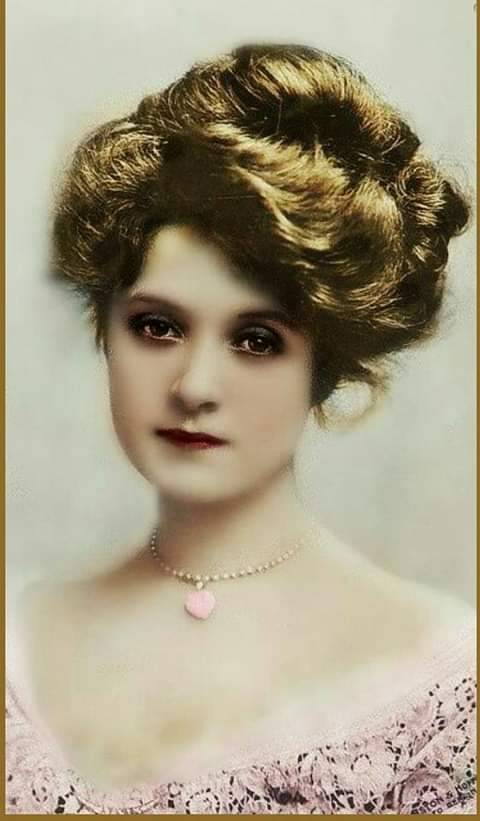
Mary William Ethelbert Appleton "Billie" Burke (August 7, 1884 – May 14, 1970) was an American actress, famous on Broadway and in early silent film and subsequently in sound film, best known to modern audiences as Glinda the Good Witch of the North in the movie musical The Wizard of Oz. She was nominated for the Academy Award for Best Supporting Actress in 1938 for her performance as Emily Kilbourne in Merrily We Live and is also remembered for her appearances in the Topper series. Billie Burke was the wife of Broadway producer Florenz Ziegfeld, Jr., of Ziegfeld Follies fame, from 1914 until his death in 1932. Her voice was unique in intonation, which she accentuated in her later character roles as dim-witted, spoiled society types.
Billie Burke was born Mary Burke, the daughter of William "Billy" Burke and Blanche (née Beatty 1844–1921), in Washington, D.C. She toured the United States and Europe with her father, who was a singer and clown and worked for the Barnum & Bailey Circus. Her family ultimately settled in London where she attended plays in the West End. In 1903, she began acting on stage, making her debut in London in The School Girl. Other London shows included The Duchess of Dantzic (1903) and The Blue Moon(1904). She eventually returned to America to star in Broadway musical comedies.
Early life
Career
Burke went on to play leads on Broadway in Mrs. Dot, Suzanne,The Runaway, The "Mind-the-Paint" Girl, and The Land of Promise from 1910 to 1913, along with a supporting role in the revival of Sir Arthur Wing Pinero's The Amazons. There she caught the eye of producer Florenz Ziegfeld, marrying him in 1914. Two years later they had a daughter, Patricia Ziegfeld Stephenson (1916–2008).
Billie Burke in the Broadway production of Arthur Wing Pinero's The "Mind the Paint" Girl (1912).
The actress's beauty and taste made her a major trendsetter throughout the 1910s and 20s. Much of her wardrobe, on screen and off, at this time was provided by the leading European couturier Lucile (in private life Lady Duff Gordon), whose New York branch was then the fashion mecca for socialites and entertainment celebrities.
Burke was signed for the movies, making her cinematic debut in the title role of Peggy (1915). Her success was phenomenal, and she was soon earning what was reputedly the highest salary granted a motion picture actress up to that time. She followed her first feature with the 15-part serial Gloria's Romance (1916), another popular and critically acclaimed vehicle. By 1917 Billie Burke was a favorite with silent movie fans, rivaling Mary Pickford, Lillian Gish,Clara Kimball Young and Irene Castle. Billie Burke starred primarily in provocative society dramas and comedies, similar in theme to The "Mind-the-Paint" Girl, her most successful American play. The star's girlish charm rivaled her acting ability, and as she dressed to the hilt in fashionable gowns, furs and jewelry, her clothes sense also won the devotion of female audiences. Among the films in which she appeared during this period were Arms and the Girl(1917), The Mysterious Miss Terry,Let's Get a Divorce (1918), Good Gracious, Annabelle (1919), Away Goes Prudence (1920) and The Frisky Mrs. Johnson (1920).
In 1933, Burke was cast as Millicent Jordan, a scatterbrained high-society woman hosting a dinner party in the comedy Dinner at Eight, directed by George Cukor, co-starring with Lionel Barrymore, Marie Dressler, John Barrymore, Jean Harlow and Wallace Beery. The movie was a great success, and revived her career. She subsequently starred in many comedies and musicals, typecast as a ditzy, fluffy and feather-brained upper-class matron with her high-pitched voice.
In 1936, MGM filmed a sanitized biopic of Florenz Ziegfeld (The Great Ziegfeld), a film that won Academy Awards for Best Picture and Best Actress (Luise Rainer as Ziegfeld's common-law wife, Anna Held). William Powell played Flo Ziegfeld and Myrna Loy played Burke, which infuriated Burke because she was under contract to the studio and could have played herself, but MGM considered her too old to cast in the part despite her obviously having the look and mannerisms down perfectly otherwise.
Despite her success in film, Billie Burke eventually returned to the stage, appearing in Caesar's Wife (1919), The Intimate Strangers (1921), The Marquise (1927) and The Happy Husband (1928). But when the family's savings were wiped out in the Wall Street Crash of 1929, she took up screen acting again to aid her husband.
In 1937 Burke appeared in the first of the Topper films, about a man haunted by two socialite ghosts (played by Cary Grant and Constance Bennett), in which she played the twittering and daffy Clara Topper. Her performance as Emily Kilbourne in Merrily We Live (1938) resulted in her only Oscar nomination. In 1938 she was chosen to play Glinda the Good Witch of the North, in the musical The Wizard of Oz (1939), directed by Victor Fleming, with Judy Garland. She had worked on a Garland film, Everybody Sing, in which she played Judy's histrionically hysterical actress-mother. Another successful film series followed withFather of the Bride (1950) and Father's Little Dividend (1951), both directed by Vincente Minnelli and starring Spencer Tracy, Joan Bennett, and Elizabeth Taylor.
Burke wrote two autobiographies, both with Cameron Van Shippe, With a Feather on My Nose (Appleton 1949) and With Powder on My Nose (Coward McCann, 1959).
Radio and television
In 1932, Burke made her Hollywood comeback, starring as Margaret Fairfield in A Bill of Divorcement, directed by George Cukor. (She played Katharine Hepburn's mother in the film, which was Hepburn's debut). Despite the death of Florenz Ziegfeld during the film's production, she resumed filming shortly after his funeral.
Burke joined the cast ofEddie Cantor's radio show in 1948
On CBS Radio, The Billie Burke Show was heard on Saturday mornings from April 3, 1943 until September 21, 1946. Sponsored by Listerine, this situation comedy was initially titled Fashions in Rations during its first year. Portraying herself as a featherbrained Good Samaritan who lived "in the little white house on Sunnyview Lane," she always offered a helping hand to those in her neighborhood. She worked often in early television, appearing in the short-lived sitcom Doc Corkle (1952). She was a guest star on several TV and radio series, including Duffy's Tavern.
On television, Burke starred in her own talk show, At Home With Billie Burke, which ran on the DuMont Television Network from June 1951 through the spring of 1952. She was one of the first female talk show hosts, after the hostesses of the earlier DuMont series And Everything Nice (1949–50) and Fashions on Parade (1948–49) which both included some talk show segments.
Burke tried to make a comeback on the New York stage. She starred in two short-lived productions: This Rock and Mrs. January and Mr. X. Although she got good reviews, the plays did not. She appeared in several plays in California as well, although her mind became clouded, and she had trouble remembering lines. In the late 1950s, her failing memory led to her retirement from show business, although her explanation for that was, "Acting just wasn't any fun anymore."
Burke's last screen appearance was in Sergeant Rutledge (1960), a Western directed by John Ford.
Source - Wikipedia
@ceeceerae
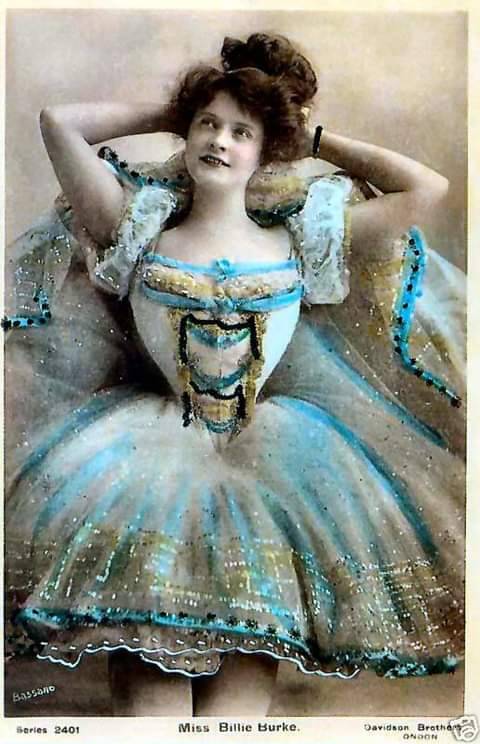
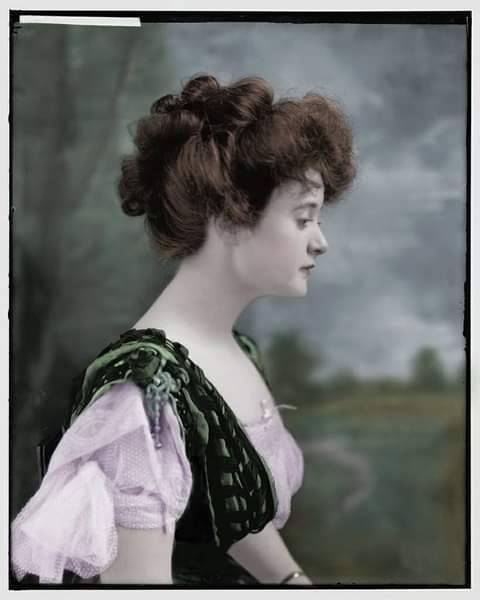
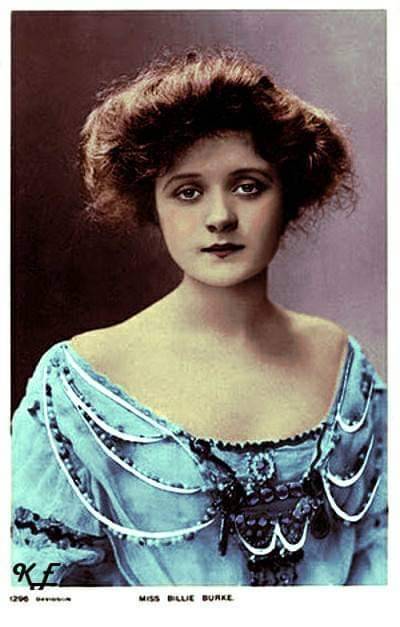
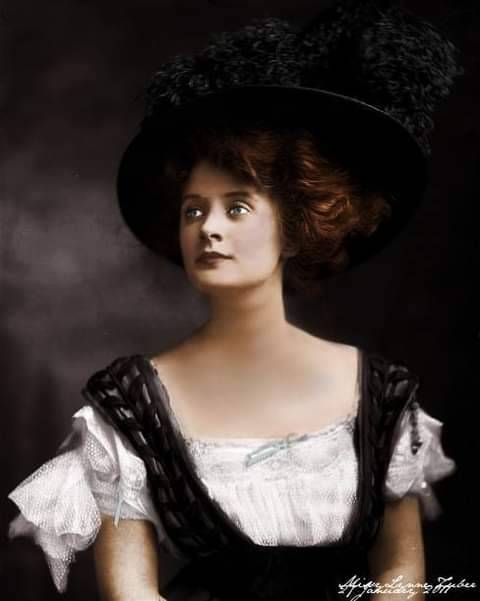
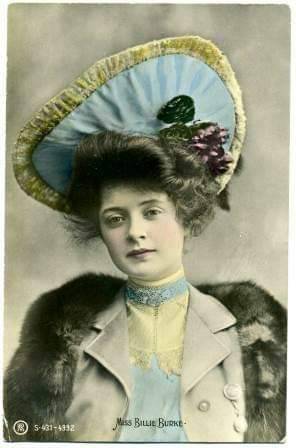
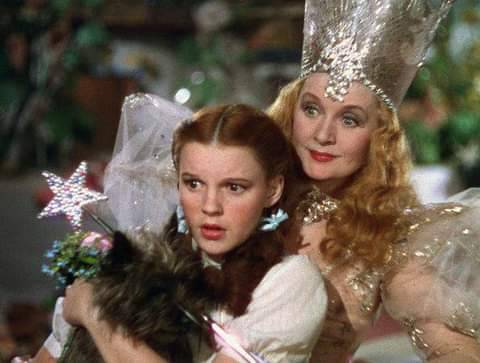

45 notes
·
View notes
Photo

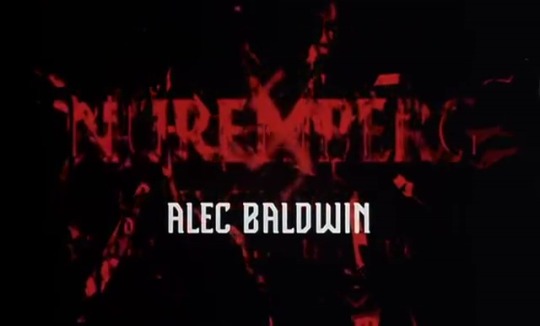
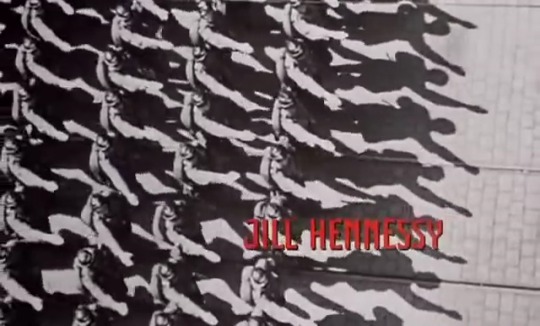

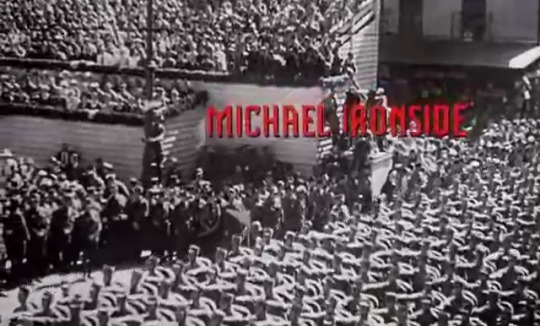
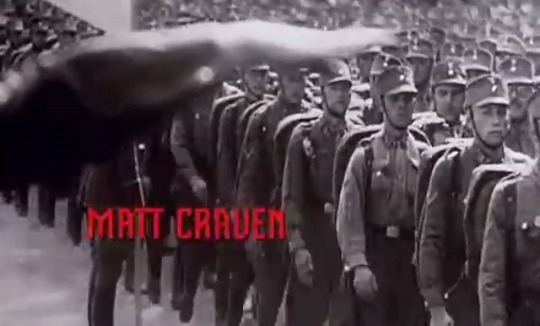
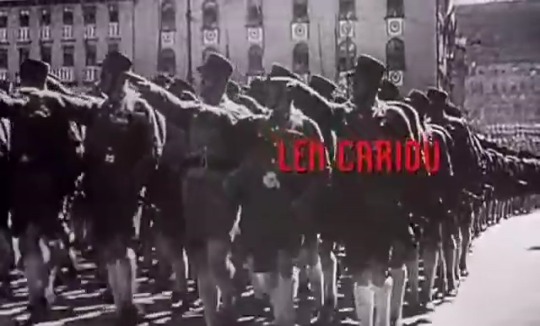
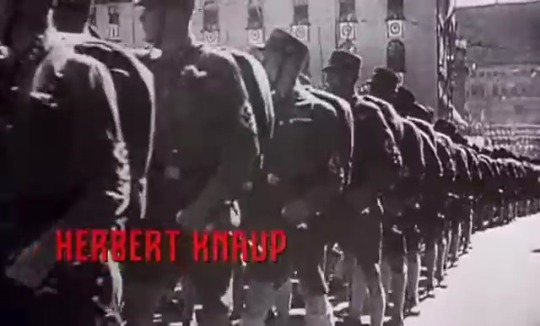


Nuremberg - TNT - July 16 - 17, 2000
Historical Drama (2 episodes)
Running Time: 180 minutes
Stars:
Alec Baldwin as Supreme Court Justice Robert H. Jackson
Brian Cox as Hermann Göring
Christopher Plummer as Sir David Maxwell Fyfe
Jill Hennessy as Elsie Douglas
Matt Craven as Capt. Gustave Gilbert
Christopher Heyerdahl as Ernst Kaltenbrunner
Roger Dunn as Col. Robert Storey
David McIlwraith as Col. John Amen
Christopher Shyer as Brig. Gen. Telford Taylor
Hrothgar Mathews as Thomas J. Dodd
Herbert Knaup as Albert Speer
Frank Moore as Hans Frank
Frank Fontaine as Wilhelm Keitel
Raymond Cloutier as Karl Dönitz
Bill Corday as Alfred Jodl
Ken Kramer as Fritz Sauckel
Max von Sydow as Samuel Rosenman
Sam Stone as Julius Streicher
Douglas O'Keeffe as Baldur von Schirach
Benoit Girard as Joachim von Ribbentrop
James Bradford as Hjalmar Schacht
Frank Burns as Wilhelm Frick
Erwin Potitt as Walther Funk
Tom Rack as Hans Fritzsche
Roc LaFortune as Rudolf Hess
Colm Feore as Rudolf Höss
Robert Joy as Anton Pachelogg
Dennis St. John as Franz von Papen
Griffith Brewer as Konstantin von Neurath
Gabriel Gascon as Erich Raeder
Julien Poulin as Dr. Robert Ley
Alain Fournier as Alfred Rosenberg
René Gagnon as Arthur Seyss-Inquart
Len Cariou as Francis Biddle
David Francis as Geoffrey Lawrence, 1st Baron Oaksey
Len Doncheff as Gen. Iona Nikitchenko
Paul Hébert as Henri Donnedieu de Vabres
Michael Ironside as Col. Burton C. Andrus
Charlotte Gainsbourg as Marie-Claude Vaillant-Couturier
Geoffrey Pounsett as Maj. Airey Neave
Steve Adams as Gen. Lucius D. Clay
Paul Hopkins as Capt. Dan Kiley
Susan Glover as Emmy Göring
Scott Gibson as Lt. Tex Wheelis
#Nuremberg#TV#Historical Drama#TNT#2000#Title#Alec Baldwin#Jill Hennessy#Brian Cox#Christopher Cox#Michael Ironside#Matt Craven#Len Cariou#Herbert Knaup#Charlotte Gainsbourg#Colm Feore#Robert Joy#Max Von Sydow#Christopher Plummer
10 notes
·
View notes
Text
Marion Morehouse, the world’s first super model
Marion Morehouse (1906-1969), was a fashion model who rose to prominance in the late 20s and early 30s, sitting for Vanity Fair and Vogue photographer Edward Steichen. The pair created some strikingly modernist photographs. She was seen as the world’s first super model - a woman who turned modelling into a fully fledged career.

She was also photographed often by Baron George Hoyningen-Huene and Cecil Beaton for Vogue and Vanity Fair in the 1920s and 1930s. Her tall, willowy, aristocratic figure had many adopting the androgynous flapper look of that the 20s is famous for. She also happened to be married to the poet e.e. Cummings.
Cecil Beaton, as ever, has something to say about her too: “It was not until Miss Marion Morehouse was discovered by Steichen that photographic models became so well known that they exerted an influence on the public. The aim of models at this time was to be grand ladies, and Marion Morehouse, with her particularly personal ways of twisting her neck, her fingers and feet, was at home in the grandest circumstances.”

Morehouse had some Choctaw Indian ancestry, with brown eyes and an angular frame. Marion was the daughter of a showman and actor who also, circumstances dictating, took jobs as a carpenter, odd job man, janitor and whatever else came his way. His name was Benjamin Isaac Morehouse, known as Isaac. Her mother, Annie Shortell Morehouse, did not come from elevated circumstances either.
Both Marion’s younger sister, Lillian, and her brother Benjamin worked in the theatre. Benjamin had a job as a stage manager. Lillian was an actress and appeared in many productions, some respectable and heavyweight and others more in the Zeigfield Follies burlesque style. At least one production was co-starring with Marion herself.
From 1923 Marion Morehouse appeared in at least five Broadway productions, some of which ran to hundreds of performances. There is also speculation that she, and maybe her sister, was in the famous Zeigfield Follies. She definitely worked as a showgirl like her sister, although her height and long legs made her stand out a bit too much on the chorus line. She also claimed to have been in a film or two, and the legend is that when she appeared on set everybody stopped what they were doing to watch her. But if she was she was uncredited.

In 1924 she was spotted by Vogue. On the occasion of a visit to New York by the French couturier Jean Patou Condé Nast decided that the magazine should run a competition to prove that the American girls were just as beautiful as the French.
The winner would become a house model for the designer in Paris. The competition is notable because it marks a turning point in the modelling industry: up till then, modelling, like being an actress, was a rather frowned upon occupation. Of course, the portraits of titled ladies appeared in magazines, and some even put on the gowns of a celebrated designer to do so. But it wasn’t a job, and if one weren’t a princess or a baroness then one’s name would not be appearing in the caption either.
Marion Moorehouse didn’t win the competition, but Edward Steichen saw her potential instead.
She modelled for the magazines for about eight years, becoming a new kind of celebrity in the process: the model girl.
Vogue started to bill her in photos: “Two mink trimmed bias panels fall from this gown of green and gold lame – a gown of great elegance and richness obtained by its gleaming fabric and intricate cut: posed by Marion Moorehouse.”

In 1932 she began a relationship with the great love of her life, e.e. Cummings. She was with him for over thirty years, though they never married. Edward Estlin Cummings, know as Estlin to his friends, was dissipated poet with two failed marriages behind him. He had a young daughter but she didn’t live with him, very probably, apart from anything else, because he had very little income and lived with his mother.
He was eight years older than Marion, whom he first saw onstage. Her lips remained sealed as to which particular production it was though, leading to speculations that it was a burlesque show, of which he was rather fond. An artist as well as poet, Cummings painted several pictures of the beautiful Marion Morehouse as well as writing about her.
The story goes that she pursued him, whilst he, obviously attracted, was also a little intimidated and hung back. However, once he accepted her, she was fierce in her protection of him. Marion Morehouse seems to have decided that he needed looking after and gave up her modelling and acting careers to attend to the famous poet. She took up photography herself.

At one point she chased off the Beat Generation poet and philosopher Allen Ginsberg, who appeared at Estlin’s door, determined that the senior writer should see his work. “You. Go away. And never come back,” she said when she saw him, allowing him and many other would-be worshippers no admittance.
Marion and Estlin were together until he died in 1962. To the chagrin of Estlin’s daughter from his previous relationship, he left the income from his royalties (a very large amount per year) to Marion.
At one point earlier in her modelling career, Edward Steichen had taken a series of nude shots of Marion Morehouse. She posed wearing only long black gloves and stockings. Hearing she was “married”, Steichen burned the negatives of these photos, wanting to avoid embarrassing either her or her husband. However, when he realised her partner was that great bohemian, e.e. Cummings, he regretted it because he thought he of all people would have actually relished the pictures.

Marion Morehouse herself died on May 18, 1969, while living at Greenwich Village, New York City, where Cummings had resided since 1924.
#marion morehouse#morehouse#supermodel#model#history#america#fashion#style#icon#mode#steichen#ee cummings
55 notes
·
View notes
Photo
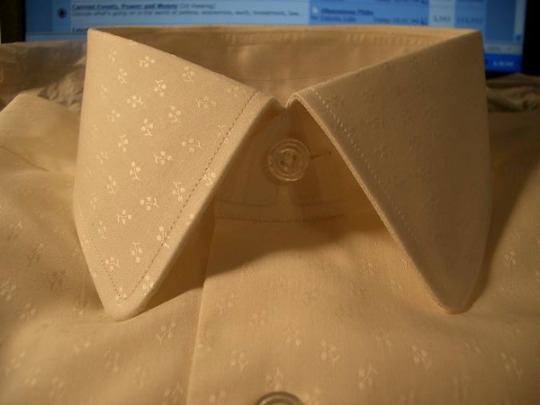
THE LEAST OF ALL CASUALTIES
by Réginald-Jérôme de Mans
I’m thinking, for some reason, of the late Adnan Khashoggi and of a host of dead playboys and nabobs, shrouded in the finest custom shirts money, so much money, could buy. Adnan Khashoggi, who so clearly wanted to be the Basil Zaharoff of the late twentieth century, an international man of mystery dealing arms and other items from the shadows, a figure of luxury legend, a man with whom I have nothing in common, save that life occasionally humbles us…
Yes, Khashoggi, who nicknamed his Korean bodyguard “Mr. Kill,” who reportedly kept $100,000 cash handy in an attaché case on board his private jet to sweeten any deal or grease any palm, who ordered the largest yacht in the world (Queen wrote a song about it! It was the villain’s yacht in a Bond film!), came undone. Iran Contra, Imelda Marcos, BCCI, a host of 1980s names of tarnished glitz like the hidden grime in a Helmsley hotel… He had to sell the yacht; Donald Trump briefly owned it before Trump’s own financial problems forced him to sell it yet again, to a Saudi prince.
Adnan Khashoggi, yes, that Khashoggi, uncle of the intrepid journalist Jamal Khashoggi, assassinated in sordid circumstances a year after Adnan died in wealth but not splendor. Assassinated and unavenged.
I am even less Adnan’s spiritual heir than that serious, dedicated nephew. It’s a strange contrast between the thoughtful engagement of one and the freewheeling, flamboyant capitalism of the other, a flamboyance of fairy tales, fairy tales because at their best they make us momentarily forget their foundations of exploitation and graft.
Like robber baron James Goldsmith (who inspired Terence Stamp’s character in Wall Street), Khashoggi was a famous customer of the bespoke services at Lanvin, the oldest couturier in Paris and for a long time the best shirtmaker there. Stories filter out, unattributed in magazines or relayed by friends in the know, stories that made him the last of the nabobs. He ordered a thousand custom shirts at a time! The workrooms (until a few years ago on-site on the Faubourg Saint-Honoré, some of the most expensive real-estate in the world!) were busy for months! Because he only wore his Lanvin custom shirts once! What a way to save on laundry bills!
What happened to them? Did he hand them down to his sons, or to Jamal? Like the King of Morocco with his Smalto custom suits, once worn did he pass them on to his staff?
Those days of excess are gone. They were long gone when I pushed the door at Lanvin, curious to try what knowledgeable friends had called the best shirtmaker. The shirtmaker and his staff must have known that, as clients go, I could not be at a farther remove from that man and those days, a gloomy wallflower anxious to make sure that my centimes counted, that what I received would last, gratefully accepting their suggestion to provide extra cloth to remake the collar and cuffs of the one shirt I initially ordered, for whenever those would wear out. For I was interested just in a single shirt from that maker, not thousands to strew in the wake of conspicuous consumption. No matter. They treated me as politely and patiently as they would their most extravagant client, and produced a shirt that fitted closely, marvelously, with handmade buttonholes that a much more famous shirtmaker exclaimed were worthy of a museum. In other words, a gem as precious as the daydreams I had burnished.
I was to be only a sporadic client, sometimes ordering only after an absence of years, surprised at how well they remembered my tastes, at how well my patternmaker carried out the refinements I wanted, indeed at how, over years, we nurtured a polite friendship over shared snark and tastes in old movies and Art Deco.
Art Deco. Lanvin’s Paris men’s shop is an entire building, opened in 1926 dedicated only to custom tailoring and shirtmaking. Prior to that it had been the headquarters of Lanvin Décor, designed with the unmistakable flourishes of Armand-Albert Rateau. A gorgeous luxury. For decades, Lanvin Tailleur et Chemisier retained Rateau’s stylized gilt découpé designs and furniture, before renovation banished those motifs only to tie patterns and other accessories. It wasn’t until the 1970s that Lanvin offered any men’s ready-to-wear. While it had embraced worldwide licenses for garments bearing the Lanvin name by the 1980s (my father has a poly-cotton Lanvin dress shirt from that period), its flagship was one of the only places in the world where – decades before Berluti made this boast – a man could be outfitted in bespoke literally from head to toe, Assiduous hands at the Lanvin-owned hatter Gélot (magically transposed from the Place Vendôme to a shop-in-shop on the Lanvin bespoke floor) still crafted and fit the finest headwear, while one of the Corthay brothers themselves created Lanvin custom shoes. As for Lanvin custom tailoring? In 1901, Jeanne Lanvin herself had designed Lanvin very first men’s garment, her friend Edmond Rostand’s elaborately embroidered uniform for his initiation into the Académie Française, the first of over 70 such custom-made uniforms Lanvin would make, along with every sort of conventional tailored garment – including suits and sportcoats for certain French politicians who could not patronize their British tailors while in office.
Those days are gone. In the ’60s Lanvin had advertised its bespoke with elegant cartoons of well-appointed gentlemen’s clubs, yacht marinas, luxury hotel suites and trophy-bedecked hunting lodges, all captioned “For a certain class of men.” Those men are mostly gone. So, too, are their replacements, the rootless international men of mystery like Khashoggi. Even intellectual poseurs (yes, I’ll grant him the “u”) like Bernard-Henri Levy stopped ordering their casually unbuttoned white shirts from Lanvin. Middle-class punters like myself, in love with the ritual of cloth selection, of fitting, of being escorted to the bespoke floor with its own little escalator, the month-long wait pregnant with anticipation for an elaborately-packaged single shirt, are too few. No more sprawling bespoke floor but a small if tasteful salon, with what remained of the ateliers on the same floor, behind a discreet door. The hidden of the hidden: at a time brands all over heavily advertised their custom services (however spurious), not a single vitrine at 15, faubourg Saint-Honoré carried the least hint that one of the finest tailors and shirtmakers in Paris resided there. Resided, for they did not travel – unless a customer flew themout. Even the shop Lanvin opened on Savile Row a few years ago didn’t bring them over, instead offering a sort of customized stock special service on its ready-to-wear designs.
This is the least of all casualties, to lament the end of something that only the most entitled of us could ever use. For even if I’ll never set foot on a yacht, I recognize how privileged I was to indulge in the affectation of a custom shirtmaker, of the fetish of its product. Of the last days of this particular legend. Ninety-five years after its founding, the custom tailor and shirtmaker defected to another life, and Lanvin bespoke is now dead. Ninety-five years! They could not put up with five more years in the shadowy recesses of their employer, a small, ever-shrinking habitat, where I hoped their remaining an afterthought would shelter them from corporate extinction, and round out a century.
The least of all casualties, for what ended is just an idea, the idea of a permanence, a waning best, a classic. For those who want the concrete, various lines of ready-to-wear remain. Lanvin was one of the classic old guard of tailors that the legendary Groupe des Cinq, including Camps, rebelled against in the 1950s. Today, whether rebel or classicist, what is left of bespoke rallies together – tailors from the supposed old guard migrate to those former iconoclast hellions, and vice versa.
The least of all casualties, like an arms dealer dying, finally, in a Harley Street clinic. No reason to weep for him, when we live among the casualties he and his colleagues may have wrought, his financial heirs likely preferring fleece vests, athleisure, performative populism. What the rest of us inherit is casualty, this daydream’s passing worthy of no more than a moment’s thoughtful pause in our current nightmares. At least allow it that.
16 notes
·
View notes
Text
Trophées de la LNH 2021: Nos prédictions
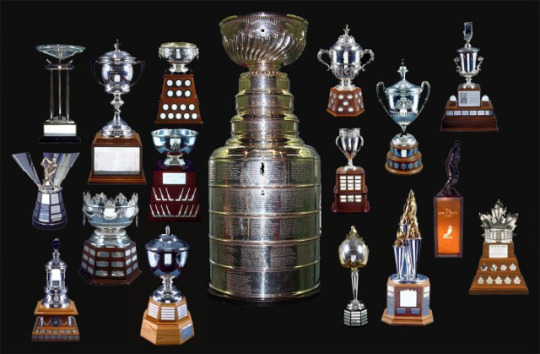
Réjouissez-vous, chers partisans, la saison de hockey est enfin commencée! Et quoi de mieux que de pouvoir regarder du hockey tous les soirs sans se sentir coupable de ne rien faire à cause du couvre-feu? Même si la Ligue nationale vient de débuter sa saison, nous avons décidé de vous offrir nos prédictions sur les différents trophées dans la LNH, afin de voir, à la fin de la campagne, si nous avions raison ou si nous nous sommes royalement trompés. Voici donc les prédictions en question :
KING CLANCY : Matt Dumba, Défenseur, Wild du Minnesota
Trophée très difficile à prédire, n’étant pas en lien avec les statistiques des joueurs, le King Clancy est un trophée remis au joueur qui a démontré du leadership autant sur la glace qu’à l’extérieur, tout en contribuant à sa communauté. En 2020, le récipiendaire de ce trophée fut Matt Dumba, pour son implication dans la cause sociale contre la brutalité policière envers les Noirs aux États-Unis, et il est difficile de croire que le trophée ne lui sera pas remis pour une deuxième saison. En effet, Dumba est cofondateur de la Hockey Diversity Alliance, qui se veut promotrice de la diversité dans la Ligue nationale, et il a été le visage de la lutte aux inégalités sociales dans la LNH, avec ses discours au centre de la glace avant les matchs de séries dans la bulle, entre autres. Nous croyons que Matt Dumba recevra ce trophée pour une deuxième saison consécutive, car la lutte aux injustices envers les Noirs est loin d’être terminée et Dumba pourra utiliser la tribune que lui donne la LNH pour discuter encore plus de ces injustices durant la saison 2021.
BILL MASTERTON : Oskar Lindblom, Attaquant, Flyers de Philadelphie
Autre trophée ne concernant pas une donnée statistique, le Bill Masterton est donné au joueur qui démontre une persévérance et une dédication au sport qu’est le hockey. En 2020, le récipiendaire fut Bobby Ryan, ayant accepté d’intégrer le programme d’assistance de la LNH pour combattre son alcoolisme. Finaliste au trophée l’an passé, Oskar Lindblom se verra assurément recevoir ce trophée s’il joue toute la saison 2021. En effet, il avait manqué toute la saison 2020, dû au sarcome d’Ewing, qui est une forme de cancer des os, mais avait pu revenir au jeu à temps pour la première ronde des séries des Flyers, dans la bulle de Toronto. Maintenant complètement rétabli de ce cancer, Lindblom pourra avoir un impact majeur avec une équipe comme les Flyers, qui aspire aux grands honneurs, et se verra, selon nous, remporter le trophée Bill Masterton.
WILLIE O’REE : À déterminer
Trophée donné à des individus qui ont eu un impact positif dans leur communauté par le hockey, il est impossible de se positionner sur qui sera le récipiendaire de ce trophée, car il est choisi par un comité distinct de la Ligue Nationale et ne concerne pas des joueurs de la LNH. Nous préférons donc nous abstenir de nommer un gagnant pour cet honneur.
JACK ADAMS : John Cooper, Lightning de Tampa Bay
Trophée accordé au meilleur entraîneur de la Ligue nationale, il avait été donné à Bruce Cassidy, des Bruins, car son équipe avait gagné le trophée des présidents, avec une fiche de 44 victoires, 14 défaites et 12 défaites en prolongation. Par contre, nous croyons que cette année, il sera accordé à John Cooper, car, en plus d’avoir gagné la Coupe avec le Lightning en 2020, nous croyons que le Lightning finira avec la meilleure fiche de la ligue, grâce, entre autres, au retour de Steven Stamkos dans l’alignement. Au niveau des finalistes, nous prédisons Jared Bednar, de l’Avalanche, et Alain Vigneault, des Flyers.
FRANK J. SELKE : Aleksander Barkov, Attaquant, Panthers de la Floride
Trophée accordé au meilleur attaquant défensif de la LNH, il avait été donné à Sean Couturier l’an passé, en raison de sa capacité à gagner des mises en jeu en zone défensive et à limiter les chances de marquer dans sa zone. Par contre, Sean Couturier est, en ce moment, blessé pour un mois et demi, donc nous croyons que cette blessure va diminuer la probabilité qu’il soit voté pour le trophée Selke. C’est donc pourquoi nous donnons le Selke à Aleksander Barkov, qui est, depuis 2013, un des meilleurs attaquants défensifs de la ligue, mais qui n’a jamais gagné le trophée Selke. Âgé de 25 ans, il débute l’apogée de sa carrière et devrait être capable de montrer qu’il est le meilleur attaquant défensif de la LNH cette année. Au niveau des finalistes, nous avons Ryan O’Reilly, des Blues, et Patrice Bergeron, des Bruins, deux habitués de ce trophée.
LADY BING : Auston Matthews, Attaquant, Maple Leafs de Toronto
Trophée remis au meilleur joueur qui combine une capacité à bien jouer tout en restant gentleman, c’est-à-dire en ne prenant pas trop de pénalités pour son équipe, il avait été donné à Nathan Mackinnon l’an passé, car il avait terminé avec 93 points et seulement 12 minutes de pénalité. Par contre, Matthews était parmi les finalistes et avait pris seulement 8 minutes de pénalité, et c’est pourquoi nous croyons que s’il est capable d’élever son jeu d’un cran et d’amasser entre 85 et 90 points tout en gardant le même nombre de minutes de pénalités, le trophée Lady Bing sera donné au numéro 34 des Maple Leafs. Au niveau des finalistes, nous prédisons Nathan Mackinnon, de l’Avalanche, qui est toujours dans la course à ce trophée, et Aleksander Barkov, des Panthers, un autre régulier du Lady Bing.
JIM GREGORY : Marc Bergevin, Canadiens de Montréal
Trophée remis au meilleur directeur général de la LNH, il avait été remis à Lou Lamoriello, des Islanders, en 2020, en raison de son excellent travail à entourer sa vedette Mathew Barzal, en allant chercher des joueurs comme Semyon Varlamov, Derick Brassard et Jean-Gabriel Pageau, travail qui avait amené les Islanders à la finale de la conférence de l’Est. Cette année, nous croyons que notre DG chéri pourrait très bien gagner ce trophée si les Canadiens font les séries et se rendent minimalement en deuxième ronde. En effet, les acquisitions de Jake Allen, Joel Edmunson, Josh Anderson, Tyler Toffoli et Corey Perry, ainsi que l’arrivée d’Alexander Romanov, vont amener le Canadien à être beaucoup plus compétitif dans la division Nord, et ceci pourrait donc assurer le trophée Jim Gregory à Bergevin. Au niveau des finalistes, nous avons Brad Treliving, des Flames, qui a aussi fait plusieurs acquisitions pour rendre Calgary plus compétitif, et Joe Sakic, qui a réussi plusieurs vols, dont l’acquisition de Devon Toews pour des pinottes.
MARK MESSIER : Gabriel Landeskog, Avalanche du Colorado
Trophée remis au joueur qui démontre de bonnes qualités pour son équipe et à l’extérieur de la glace, c’est monsieur Mark Messier qui choisit le joueur qui recevra cette reconnaissance, et c’est souvent des capitaines qui finissent par la recevoir. En 2020, Mark Giordano, des Flames, a reçu le trophée, grâce à son leadership en tant que capitaine des Flames et son travail charitable, lui qui a fondé des organismes de charité, comme Team Giordano, qui promeut l’activité physique et le travail académique chez les jeunes. Cette année, nous croyons que le trophée ira à Gabe Landeskog, car, tout en étant le capitaine d’une équipe qui se rendra assurément loin en séries, il est impliqué dans plusieurs organisations, comme Friends, qui aide à lutter contre l’intimidation dans les écoles, et a fait beaucoup de dons pour contrer la COVID-19 dans l’état du Colorado.
CALDER : Kirill Kaprizov, Attaquant, Wild du Minnesota
Trophée remis à la recrue de l’année dans la LNH, Cale Makar en avait été le récipiendaire en 2020, dû à sa récolte de 50 points en 57 matchs en tant que défenseur, ce qui est absolument phénoménal. Cette année, nous le donnons à Kirill Kaprizov, qui en est à sa première saison dans la LNH, après avoir dominé la Ligue continentale de Russie, considérée deuxième meilleure ligue au monde. De plus, à 23 ans, il est un peu plus vieux que les autres recrues de la LNH, et il a donc un peu plus d’expérience, et il jouera sur le premier trio du Wild dès le début de la saison, tous des facteurs qui peuvent l’aider à remporter le Calder. Au niveau des finalistes, nous avons Igor Shesterkin, des Rangers, et Tim Stützle, des Sénateurs.
HART : Nathan MacKinnon, Attaquant, Avalanche du Colorado
Probablement le trophée le plus prestigieux après la Coupe Stanley, il est remis au joueur le plus important à son équipe et a été donné à Leon Draisaitl en 2020, dû à une récolte de 110 points en 71 matchs chez les Oilers. Par contre, nous croyons que Nathan MacKinnon a toutes les chances de le gagner cette année, lui qui était finaliste l’an passé. Étant le visage d’une équipe comme l’Avalanche, qui aspire aux grands honneurs, il arrive à son apogée, à 25 ans, et devrait donc connaître, en théorie, une des meilleures saisons de sa carrière déjà exceptionnelle. De plus, si son équipe termine haut dans le classement, cela pourrait grandement jouer en sa faveur pour gagner ce trophée. Au niveau des finalistes, nous avons Connor McDavid, des Oilers, et Artemi Panarin, des Rangers.
NORRIS : Quinn Hughes, Défenseur, Canucks de Vancouver
La décision de choisir Quinn Hughes pour le trophée du meilleur défenseur de la LNH est très impressionnante, nous en sommes conscients, mais elle n’est pas illogique. En effet, Quinn Hughes a terminé la saison dernière avec 53 points en 68 matchs, tout en étant le visage de la défense des Canucks, équipe qui s’est rendue en deuxième ronde dans la bulle, et le quart-arrière de leur supériorité numérique, tandis que le gagnant de l’an passé, Roman Josi, a terminé la saison avec 65 points en 69 matchs dans une équipe des Prédateurs qui a eu de la difficulté tout l’année. De plus, Quinn Hughes va continuer d’évoluer en tant que joueur et pourrait connaître une saison offensive mémorable, lui qui a déjà 3 points et 2 matchs joués dans la saison 2021. Au niveau des finalistes, nous avons Cale Makar, de l’Avalanche, et Victor Hedman, du Lightning.
TED LINDSAY : Connor McDavid, Attaquant, Oilers d’Edmonton
Trophée remis au joueur le plus important à son équipe selon le reste de la LNH, il avait aussi été gagné par Leon Draisaitl l’an passé, dû à sa saison de 110 points en 71 matchs. Par contre, nous croyons que les joueurs diront cette année que Connor McDavid est le joueur le plus important à son équipe, simplement car il est impossible à défendre pour les défenseurs adverses, dû à sa vitesse incroyable, vitesse qui lui permet d’amasser beaucoup de points. Donc, nous croyons que les joueurs pensent que McDavid est plus important à son équipe que MacKinnon, par exemple, car il est un cauchemar pour les défensives adverses. Au niveau des finalistes, nous avons Nathan MacKinnon, de l’Avalanche, et Artemi Panarin, des Rangers.
VÉZINA : Andrei Vasilevskiy, Gardien, Lightning de Tampa Bay
Trophée le plus prestigieux pour les gardiens, il a été remis, en 2020, à Connor Hellebuyck, qui a su garder un pourcentage d’efficacité de 0,922 et une moyenne de buts alloués de 2,57. Par contre, même s’il sera encore dans les finalistes, nous ne croyons pas que Hellebuyck gagnera ce trophée pour une deuxième année de suite, car nous ne voyons pas les Jets en séries, dû à une division Nord très compétitive. À la place de gagnant du trophée, nous voyons Andrei Vasilevskiy, qui est un habitué de ce trophée et qui, dû au fait qu’il joue dans une division Centrale assez faible, ne sera pas menacé par les attaques adverses, ce qui lui permettra de garder des bonnes statistiques. Au niveau des finalistes, nous avons Connor Hellebuyck, des Jets, et Carey Price, du Canadien, autres habitués de ce trophée.
BONUS : Voici, selon nous, l’équipe de recrues de 2021 :
Gardien : Igor Shesterkin, Rangers de New York
Défenseur 1: Alexander Romanov, Canadiens de Montréal
Défenseur 2 : Ty Smith, Devils du New Jersey
Attaquant 1: Kirill Kaprizov, Wild du Minnesota
Attaquant 2 : Tim Stueztle, Sénateurs d’Ottawa
Attaquant 3 : Alexis Lafrenière, Rangers de New York
2 notes
·
View notes
Photo

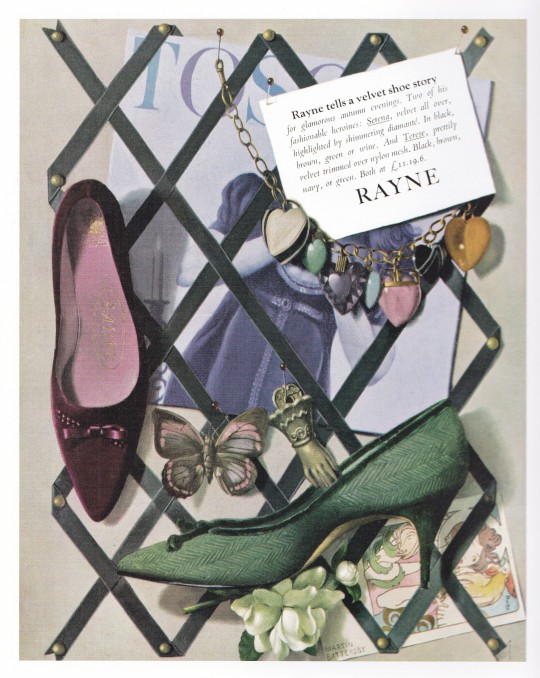



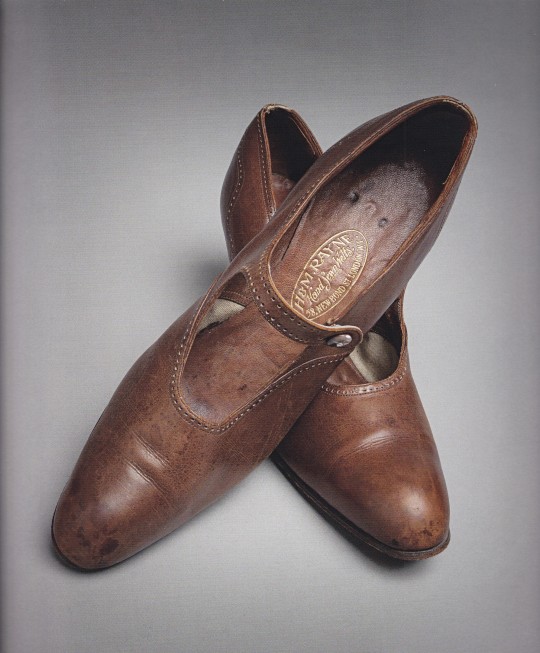
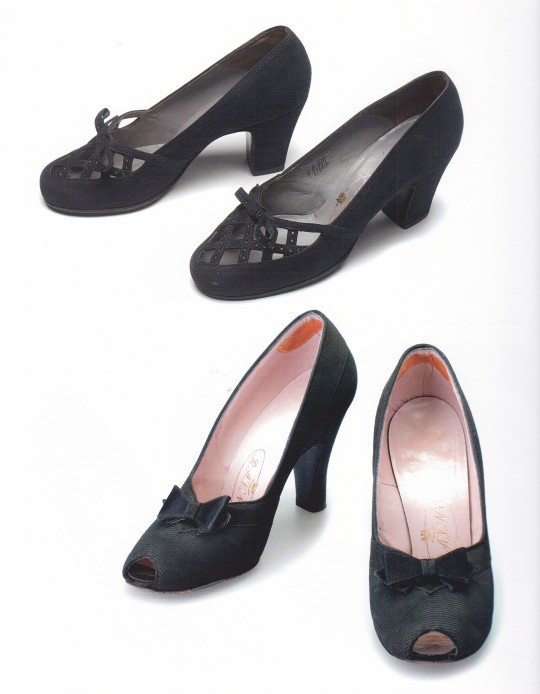



Rayne
Shoes for Stars
Michael Pick
Acc Art Books, London 2015, 190 pages, ISBN 978-1851497935
euro 50,00
email if you want to buy [email protected]
Rayne is the name synonymous with the best in British 20th-century shoe design. Re-launched as a British-owned company in 2013, the remarkable design achievements of the company in the 20th-century are illustrated in this sumptuous book. The business began in the late 19th-century as a theatrical costumier and soon added shoes to its products, with a factory in Bermondsey near the current Fashion & Textile Museum. Early clients included the Ballet Russes and Nijinsky. By the 1920s, members of the British Royal family and aristocracy were clients and a shop was opened on Bond Street with a new factory based at King's Cross. By 1950, the company had three royal warrants, had suppiled shoes for the wedding of Princess Elizabeth (now Queen Elizabeth II) in 1947, and had a strong American presence with Delman Shoes at Bergdorf Goodman, NYC, amongst other locations. Sir Edward Rayne became a celebrity in his own right and collaborated with many famous designers such as Roger Vivier, Bruce Oldfield, Jean Muir, and the "Fashion Knight" Sir Norman Harnell, and Hardy Amies. In the 1970s, Bill Gibb designed collections for Rayne, and Rayne supplied the shoes for several leading French couturiers houses such as Lanvin and Nina Ricci. In the 1980s Bruce Oldfield designed collections for them. Oliver Messel re-designed the famous Bond Street Store, which attracted stars of stage and screen, such as Elizabeth Taylor, as well as society ladies.
06/02/20
orders to: [email protected]
ordini a: [email protected]
twitter:@fashionbooksmi
instagram: fashionbooksmilano
designbooksmilano
tumblr: fashionbooksmilano
designbooksmilano
#Rayne#shoes for stars#scarpe#british shoes#shoes design#fashion accessories#fashion inspirations#fashion books#fashionbooksmilano
8 notes
·
View notes
Text
Darren Star’s New Series Has More City Than Sex — And It’s Paris
WWD went behind the scenes with the television guru and his star Lily Collins as the new series wraps shooting in the French capital.

click here to see the full set.
Among clichés about Paris: Fashion is such an entrenched part of daily life that taxi drivers in the French capital can talk authoritatively about collections and designers during fashion weeks.
Darren Star discovered a new one: that French extras on film sets know precisely, almost instinctively, how to behave at a fashion show.
That was the case last week when 250 extras assembled for one of the finale scenes for season one of “Emily in Paris,” the television series the “Sex and the City” and “Beverly Hills, 90210” creator has been filming in the French capital, and environs, for the last four months. Shooting wraps up this week, and the 10 episodes are slated to air next summer on the Paramount Network.
“We’re really getting the character and the texture of the city — and it informs everything we do,” says Star, inviting WWD to attend a sprawling shoot in the courtyard of La Monnaie de Paris that involved a garbage truck, a guerrilla fashion show of outlandish neon gowns, and a roped-off red carpet swamped by a noisy crowd.
Star describes the series as a romantic comedy or “dramedy” centered on a “fish-out-of-water” American in Paris, portrayed by Lily Collins, on this day dressed in a floral-print puffer jacket, matching short skirt and bright pink beret.
The 30-year-old actress appears in almost every scene as Emily, sharing her star billing with a city that Star has swooned over since he was 19, and one he found to be more ravishing and picturesque than ever.
“We’ve become very inward-looking as a country, and I think it’s good to do a show that celebrates another culture,” Star says, seated on a director’s chair tucked in a chilly hallway steps away from the main action. “Anywhere you put the camera, this city looks gorgeous and surreally beautiful. That’s another cliché of Paris.”
Beyond the romanticism of the historic city, Star wishes to convey its elegant, unrushed way of life. “There’s still a sense of graciousness and manners, the way people interact with each other, the politeness and respect for one other, which I feel is really missing at home,” he enthuses. “It’s definitely a more mannered society. It still exists!”
Star brought his crew and cast to the gilded Opéra Garnier, the Pont Alexandre III, Le Grand Véfour restaurant, Luxembourg Gardens and the Musée des Arts Forains dedicated to funfair artifacts. “Paris is definitely a character in the story the way New York was in ‘Sex and the City,'” he says. “I revel in the clichés. I love it all.”
The television guru is equally smitten with Collins, daughter of English pop icon Phil Collins.
“She’s the youngest character I’ve written for since ‘Melrose Place,'” he says, name-dropping another of his zeitgeist-defining shows. “You’ve got to come to Paris as a young person to have a certain sense of wonder.”
Collins portrays a budding professional parachuted in from Chicago to implement social media at a French luxury marketing agency, setting the stage for drama and culture clashes — not to mention references to fashion and perfume brands; some real, some fictional.
In an interview, Collins described her character as a “go-getter, determined, optimistic” and perhaps “too happy and slightly annoying. She just has that American sense of can-do that clashes with some of the people she encounters. That can come across as foreign and annoying to some; for others, it’s endearing.
“Emily feels like a very modern woman, finding her way in her job, finding her way in her love life,” she continues. “We can all relate to that.”
Emily’s boss at the fictional agency is portrayed by French actress Philippine Leroy-Beaulieu, who describes her character as “a little bit the villain” as Star’s “meta-vision” for the show explores the gulf between brash American enthusiasm and French formality and reserve.
“Darren is making as much fun of the Americans as he is the French. It’s a very tender way of looking at it. It’s affectionate cruelty,” she says, her mouth curling into a wry smile. “It’s more about bridging the cultures.”
And, she adds, “there are a lot of great punch lines.”
Star is careful not to reveal too much of the plot, but describes Collins’ character as a charming, yet tone-deaf American who “doesn’t speak French and doesn’t have any great love or affinity for Paris. And she’s not warmly embraced.”
Known more for dramatic roles in films such as “Love, Rosie,” “Mirror Mirror,” and “The Mortal Instruments: City of Bones,” Collins shows a new side of herself in “Emily in Paris,” Star enthuses.
“She’s smart, she’s funny, and she’s a terrific actress. She is such a romantic comedy star,” he says, marveling that she brought to mind a young Audrey Hepburn in many scenes. “I think people are going to fall in love with her.”
Collins is also a producer on the program, consulted on the wardrobe and brought a contagious, joyful energy to the set. “Her spirit never flags, and that trickles down to everyone on the set,” Star says.
The admiration is mutual. “I grew up loving every show he did,” Collins says about Star, whose latest TV creation is “Younger,” already on its sixth season.
“I love his perspective on female characters,” the actress adds. “He’s so hands-on with everything and is on the set every day, yet he is also so incredibly collaborative. He chimes in and is creatively inspiring all the time.”
Collins has become smitten with the French capital over the past few months. “It has been an utter joy to work here,” Collins says. “There’s so much culture, so much beautiful architecture and so many beautiful sights to see in Paris. The locations have been absolutely incredible.”
Fashion plays an important and colorful role in the show, and Star called on his “Sex and the City” collaborator Patricia Field, plus costume designer Marylin Fitoussi, to team up and shape the look of the show.
“There are a lot of hats. Way more hats than I ever expected,” Star says, shaking his head in mock disbelief.
He gingerly describes Emily’s style as “fun” and not exactly subtle. “She can pull off an Eiffel Tower print dress,” he deadpans. “Her style gets more sophisticated as the show continues, but it’s a series, so she’s always going to be an American.”
Collins describes Emily’s clothes as colorful and loud, telegraphing her personality: “She’s a ray of sunshine; there’s so much color and pattern.”
In her life as an actress, Collins is admired for her sleek-yet-feminine style on the red carpet. She is an ambassador for Lancôme, and a friend of jewelry house Cartier.
Star is also a fan of fashion, more as a spectator, and appreciates the bite-size theatrical spectacle of runway shows. He praised Thom Browne’s spring 2020 display and Chanel’s beach set for its spring 2019 collection.
And he clearly is hip to the tensions that are festering between the new and old guards as fashion enters the social media age. The fashion show scene in the finale episode recounts a showdown between an elderly French couturier and a brash American streetwear brand that results in a boisterous display of one-upmanship.
“Lily’s character comes from the generation of Instagram,” Star explains. “The democratization of taste becomes a subject in the show. Who are the gatekeepers of taste, and how it’s changing is something we talk about in the show.”
Yet Star sees the show mainly as a “love letter to Paris” that will surely inspire many young women to log onto Expedia.com and book flights. Or armchair travelers can simply relish the cinematic splendor.
“Television has become big — and I mean big in terms of scope. I want people to have an experience watching this series,” Star says. “I wanted to share my excitement about Paris in this series, and I think people will be able to leave their lives for a bit watching this show.”
vía WWC.
1 note
·
View note
Audio
(La Bande Adhesive)
0:00:00 - Happy Mail [Hoahio] 0:03:43 - Planting Trees Creating Beauty [Arve Henriksen] 0:08:02 - Rapsodie Espagnole, Prélude À La Nuit [Maurice Ravel] 0:11:40 - Feel So Different [Sinead O'Connor] 0:18:04 - As Complicated And As Beautiful As Always [Alog] 0:24:49 - Hive [Ikue Mori] 0:29:55 - Chet [Jamie Saft] 0:34:31 - Machine Gun [Portishead] 0:39:10 - Lookout [Wibutee] 0:43:58 - L'éternel Retour [François Couturier] 0:47:36 - The Miraculous Mandarin, Third Seduction Game [Béla Bartók] 0:49:16 - Motets, Komm, Jesu, komm [J.S.Bach] 0:56:02 - Pavane Pour Une Infante Défunte [Maurice Ravel] 1:02:15 - Le Banquet céleste [Olivier Messiaen] 1:08:10 - 2/1 [Brian Eno] 1:16:27 - Lux aeterna [Ligeti] 1:24:20 - Padmasambhava Tsechu Sadhana [David Lewiston] 1:37:13 - Contemplation Part 2 [Fred Gianelli] 1:48:16 - Áhccái, Mix by Future Prophecies [Mari Boine] 1:56:56 - Red Mystic [Monolight] 2:02:18 - Drunk Dj's [Alog] 2:07:00 - Chatchat [Hoahio] 2:09:16 - Clapper [Ikue Mori] 2:12:00 - Up And Away [Wibutee] 2:14:59 - Hymne À La Muse [Roberto Gerhard] 2:15:54 - White Gravel [Arve Henriksen] 2:17:53 - South Orange Sunset [Massacre] 2:21:58 - All Natural [Tetsu Inoue] 2:23:38 - Pierrot Lunaire, Sérénade [Schoenberg] 2:25:59 - Mode De Valeurs Et D'intensités [Olivier Messiaen] 2:29:47 - Chamber Symphony #1 In E Schoenberg] 2:59:10 - Exodus [Edward Artemiev] 3:05:50 - Signal to Noise II [Robert Henke] 3:14:12 - Etude pour Orgue [Ligeti] 3:20:14 - Kuvio 4 [Philus aka Mika Vainio] 3:29:02 - Recipe [Ikue Mori] 3:33:01 - Jellybrain [Tore Elgaroy] 3:34:56 - Once Upon A Time In The West [Ennio Morricone / John Zorn] 3:43:00 - Azure Blue [Gabor Szabo] 3:47:12 - Jolene [Dolly Parton] 3:50:39 - Adagio , Symphony #9 In D [Mahler] 4:11:48 - Masonic Funeral Music [Mozart] 4:17:13 - Introitus, Requiem In D Minor [Mozart] 4:21:49 - Dream [Edward Artemiev] 4:28:19 - Aghora [Bill Laswell] 4:38:00 - Cook Islands [Phonophani] 4:40:45 - T'khelet [Jamie Saft] 4:47:09 - Less Than Lovers, More Than Friends [Hoahio] 4:53:28 - Agai [Tv Victor] 5:55:55 - END
#hoahio#arve henriksen#maurice ravel#sinead o'connor#alog#ikue mori#portishead#wibutee#François Couturier#béla bartók#j. s. bach#olivier messiaen#brian eno#ligeti#david lewiston#fred gianelli#mari boine#monolight#roberto gerhard#massacre#tetsu inoue#schoenberg#Edward Artemiev#robert henke#mika vainio#tore elgaroy#john zorn#gabor szabo#dolly parton#mozart
20 notes
·
View notes